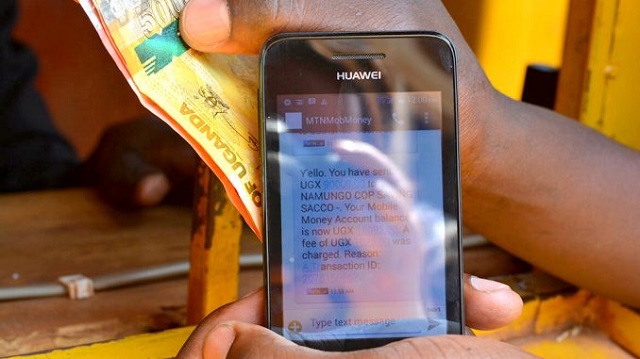
Kampala, Uganda | THE INDEPENDENT | Mobile money transactions hit the Shillings 7.2 trillion in March 2020 from Shillings 3.4 trillion in 2016. The Finance Minister Matia Kasaija disclosed this while presenting the 2020/2021 financial year budget estimates to parliament.
He explained that the Information, Communication and Technology (ICT) sector performed well since internet users have increased from 7.5 million in 2016 to 11 million in March 2020.
Kasaija also revealed that the total telephone subscriptions which constitute 60 percent mobile subscriptions increased from 21 million in 2016 to 28 million in January 2020. He added that the national backbone infrastructure now covers 49 districts, 480 ministries, agencies and local governments and 7 border posts.
“The monthly average unit cost of internet bandwidth for one megabite per second (1Mbps) on the backbone has reduced from US Dollars 300 to US Dollars 70. The 500-seater ICT Innovation Hub at Nakawa was also completed during the year. Furthermore, 172 ICT Innovators were supported under the National ICT Initiatives Programme (NIISP) to develop e-solutions. Some of their software applications have been used for business continuity during the coronavirus lockdown,” he said.
Kasaija also said that Posta Uganda launched community information centers in Kitgum, Kasese, Moroto and Mubende to enhance the provision of information on government services and programs. He also said Posta Uganda successfully implemented the International Postal System (IPS) at 48 district post offices enabling improvement in international and national operational efficiency in timely exchange of post.
In regard to power, Kasaija said the country continues to make long strides in developing economic infrastructure. He revealed that the country’s electricity generation capacity now stands at 1,254 megawatts with the completion of the 42 mega watt Agago-Achwa II, the 76 mega watt Kyambura and the 5.9 mega watt Ndugutu power projects.
“The 183 Mega Watt Isimba Power Project and its transmission lines were commissioned and the 600 Mega Watt Karuma Power Project is 98 percent complete and is due for commissioning in November 2020. The Karuma – Kawanda Transmission Line is also 82 percent complete. Construction of Nyagak III Power Project also resumed in May 2019,” he added.
He also noted that the electrification of industrial parks has progressed with the commissioning of the Mukono and Iganga industrial parks sub-stations. “Under the Rural Electrification programme, 14,820 kilometres of medium-voltage power lines and 10,280 kilometres of low voltage distribution power lines have been constructed. Since we launched the free Electricity Connections Policy in November 2018, 277,500 rural households have been connected with a target to connect 300,000 rural households annually,” Kasaija explained.
******
URN
 The Independent Uganda: You get the Truth we Pay the Price
The Independent Uganda: You get the Truth we Pay the Price



